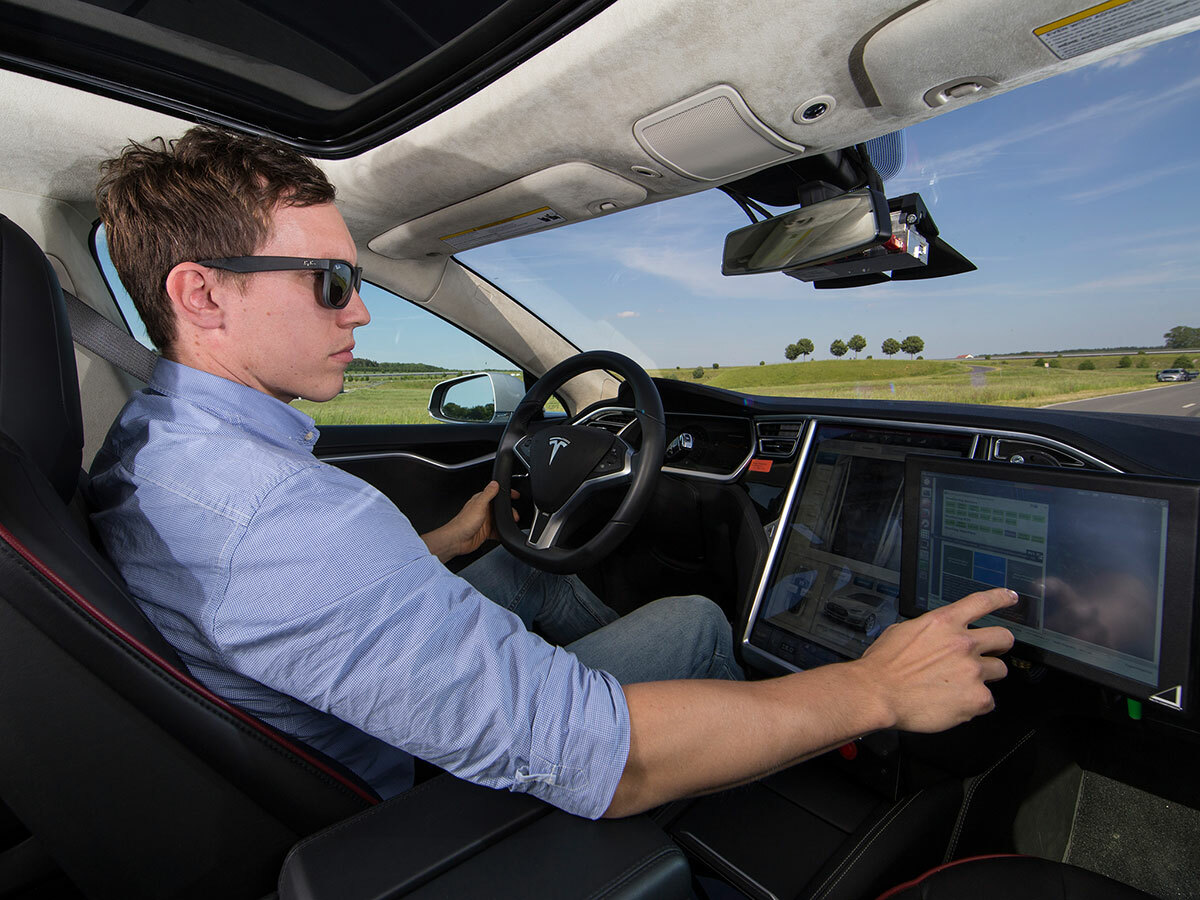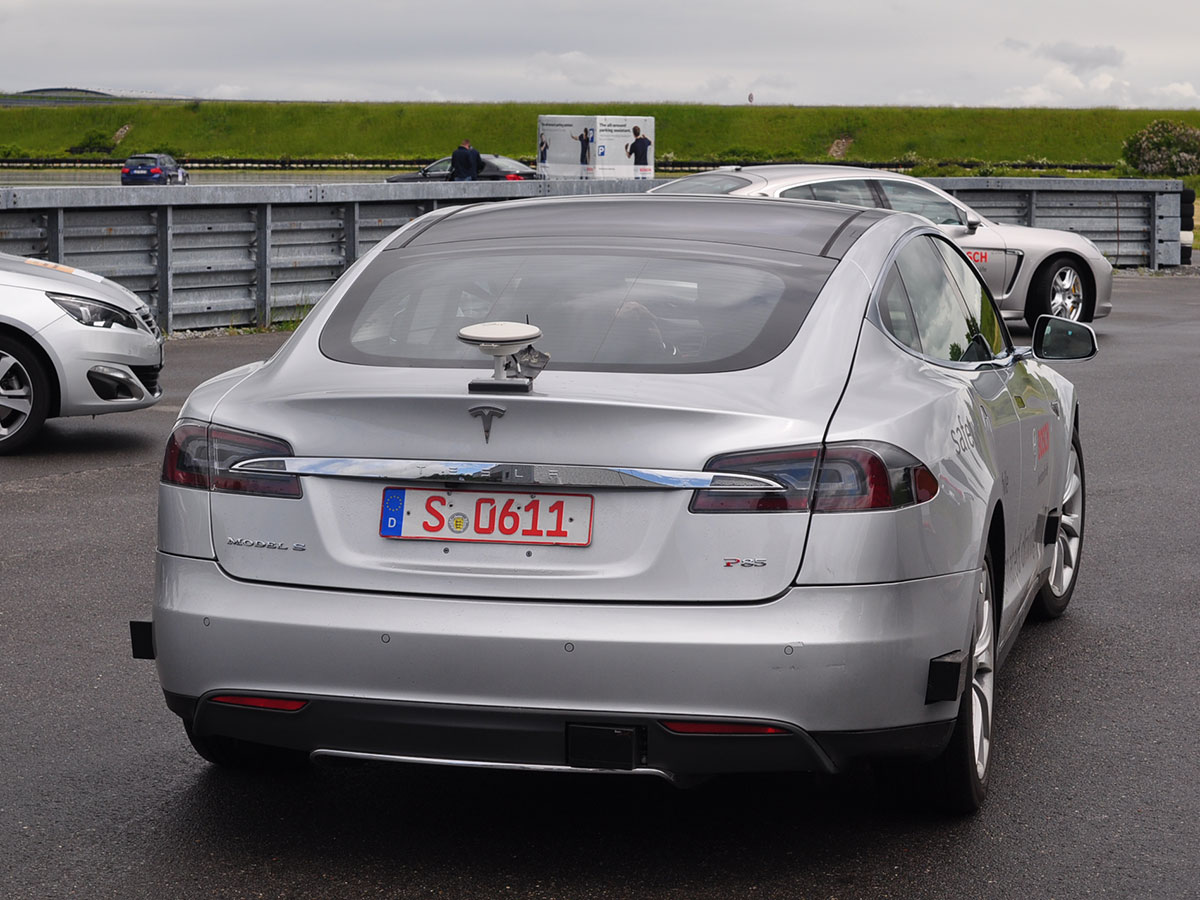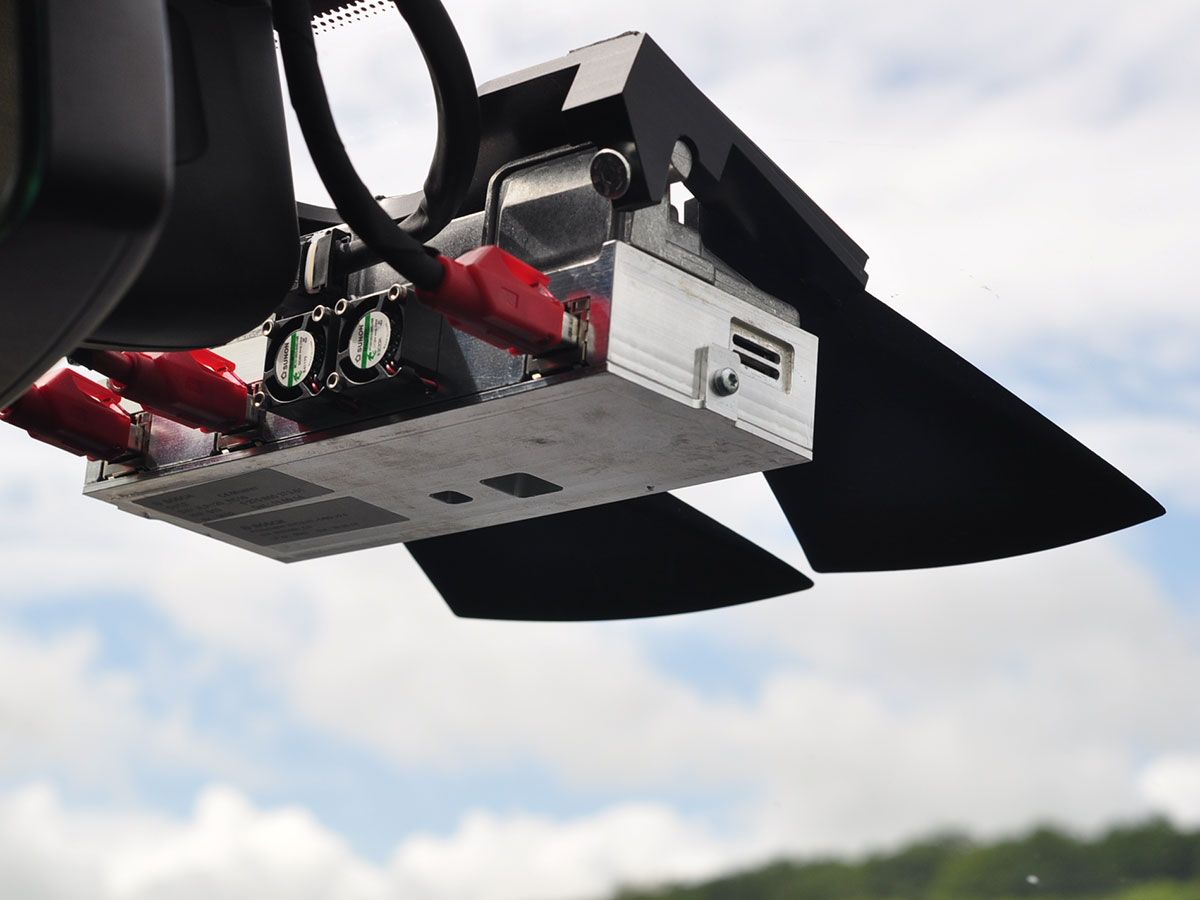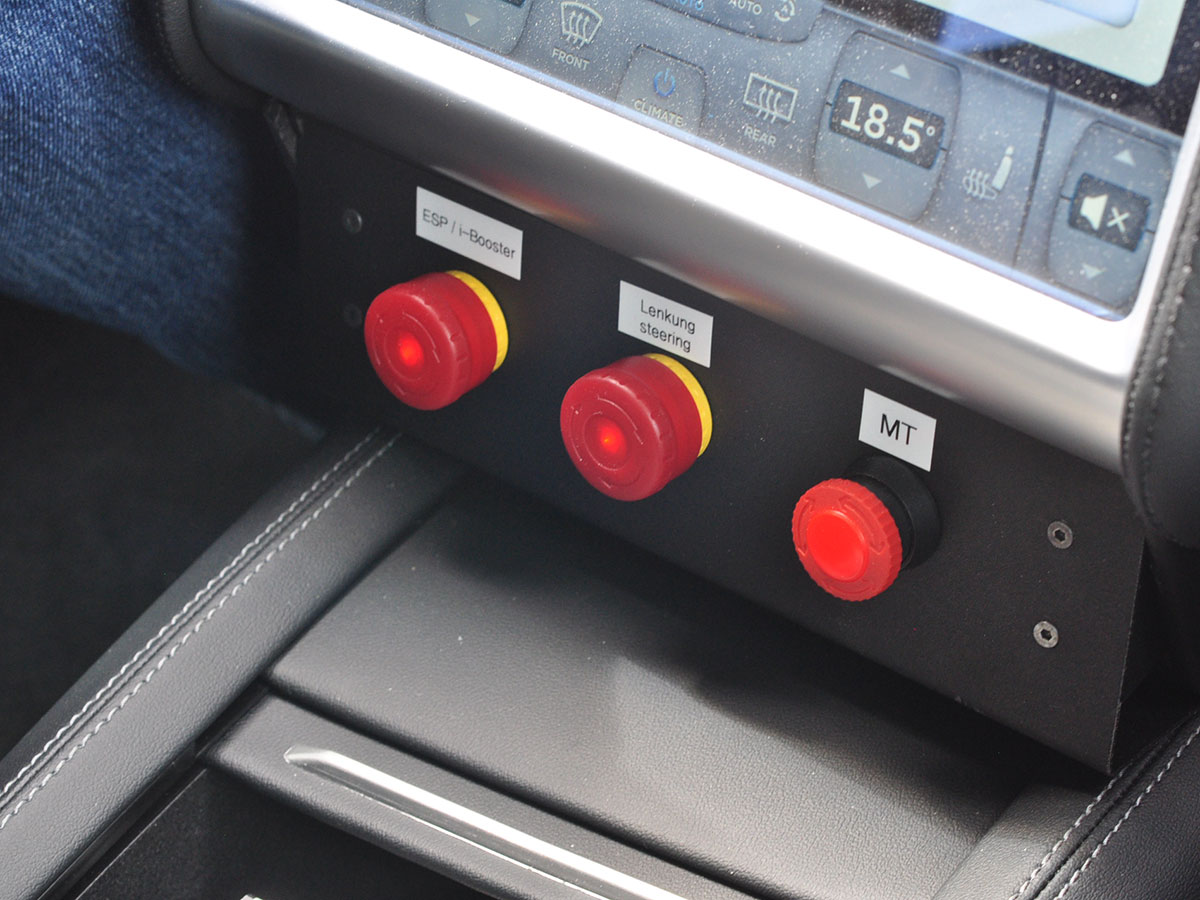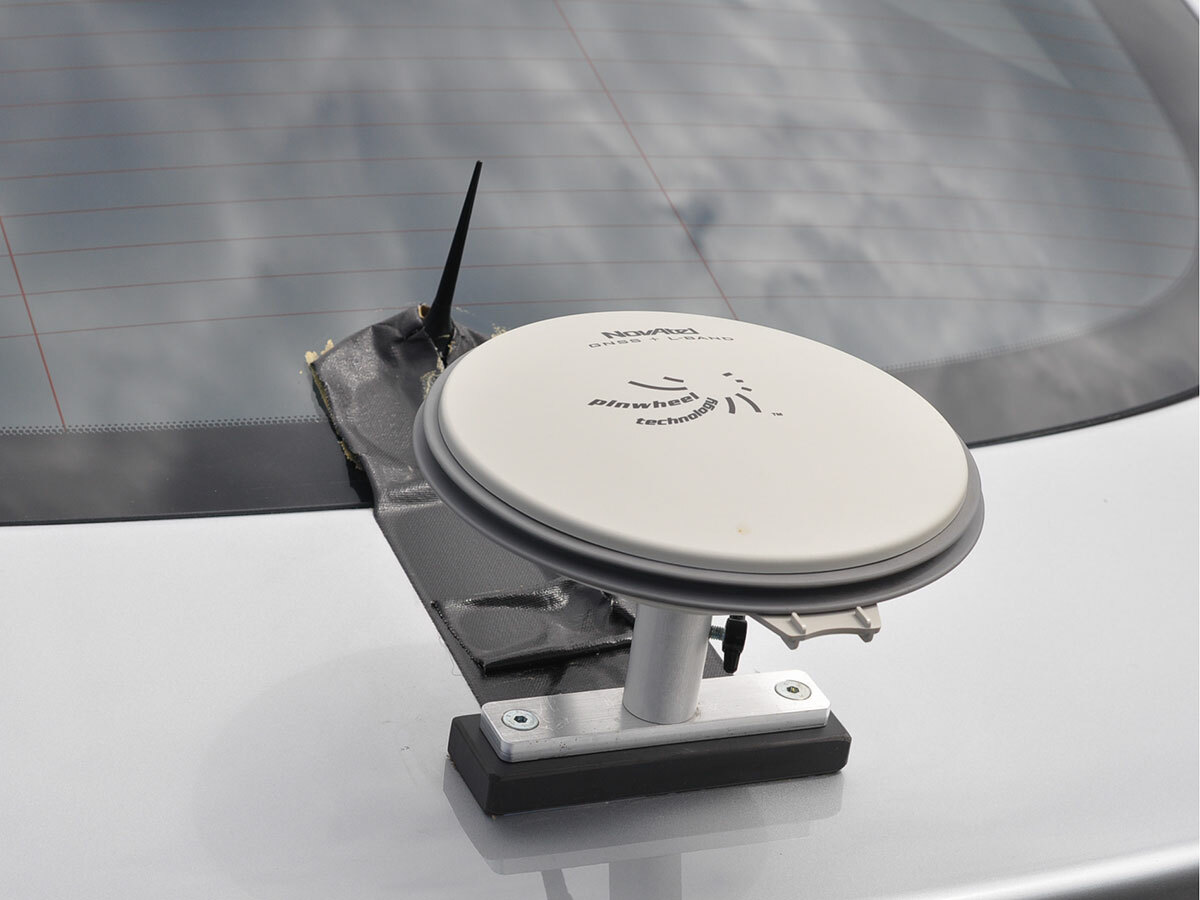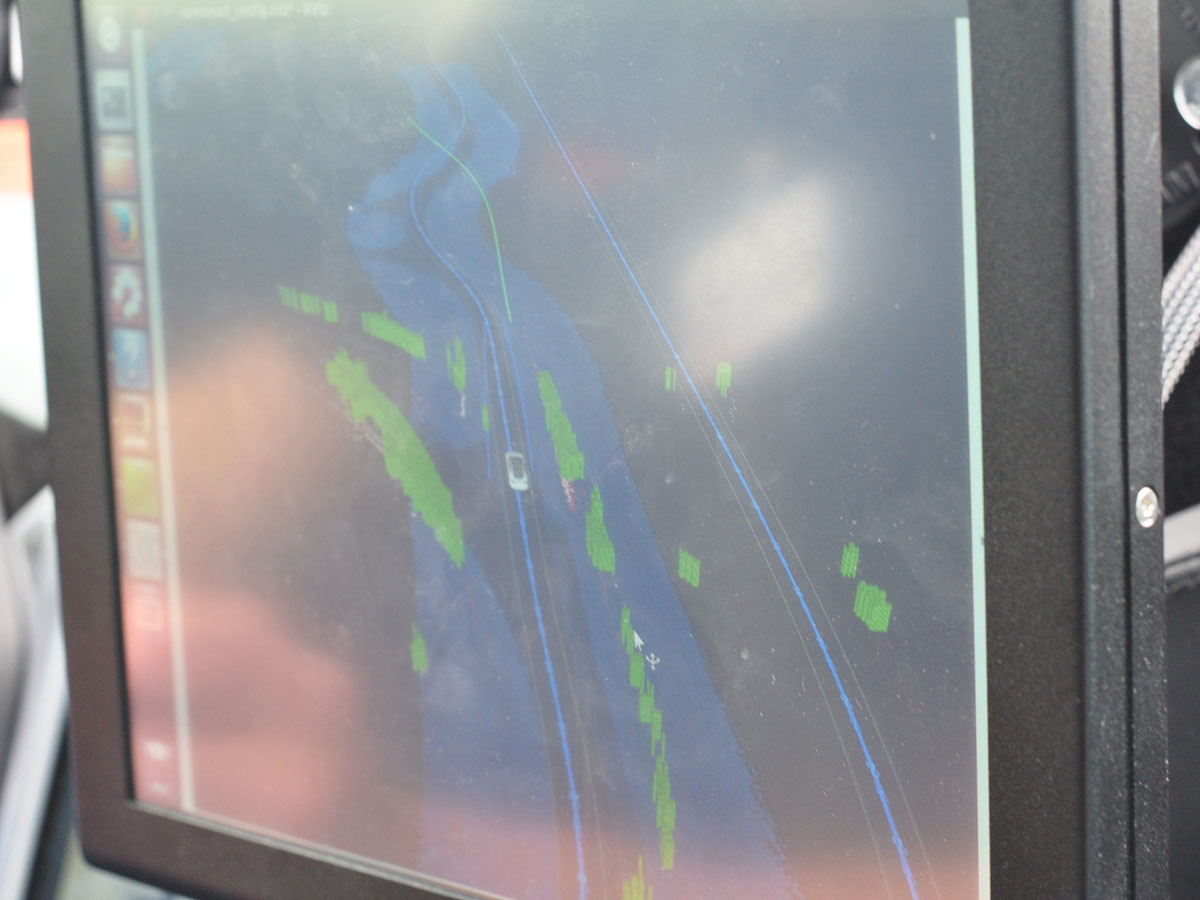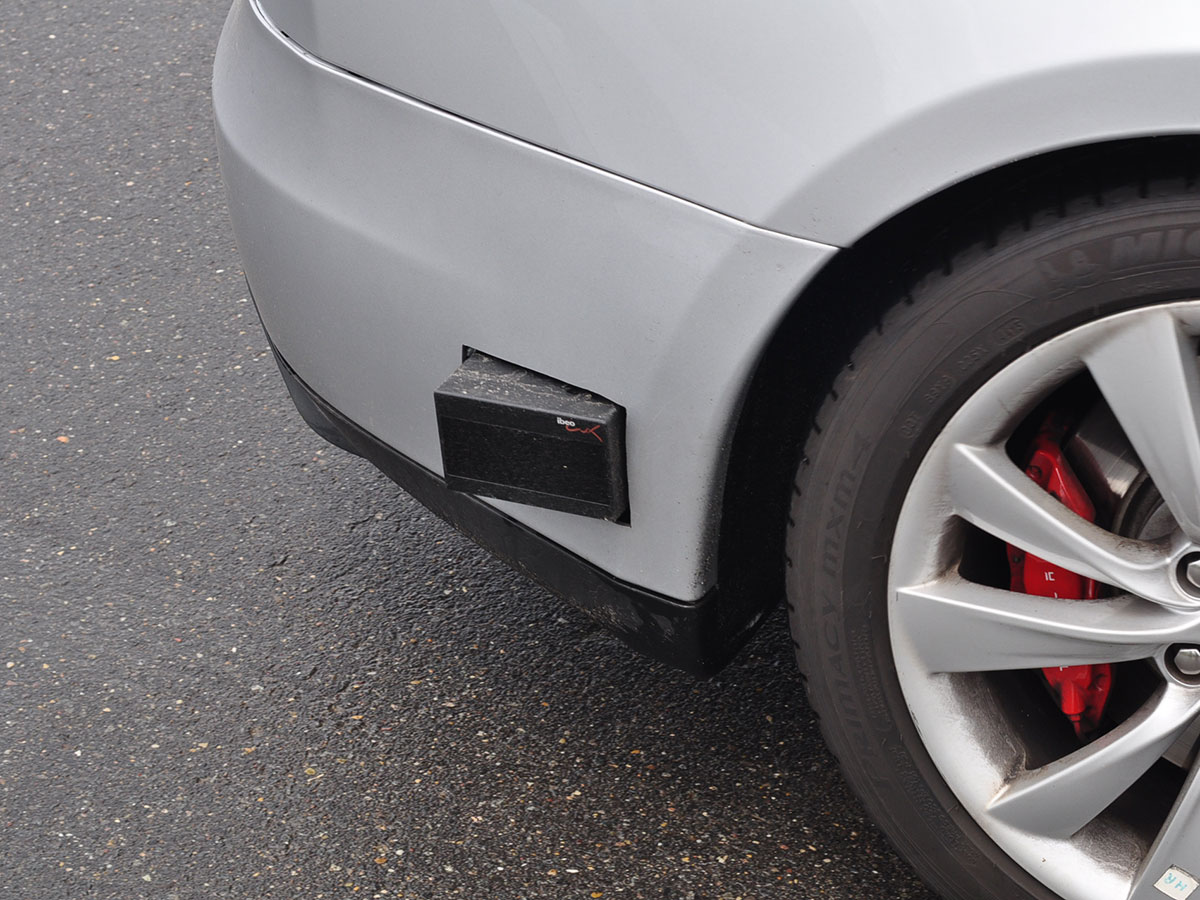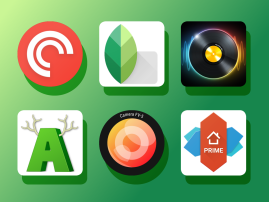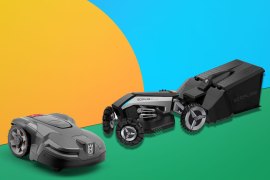This robotic Tesla Model S drove me around a German test track (and didn’t crash)
Bosch cut up an electric supercar and made it very, very clever
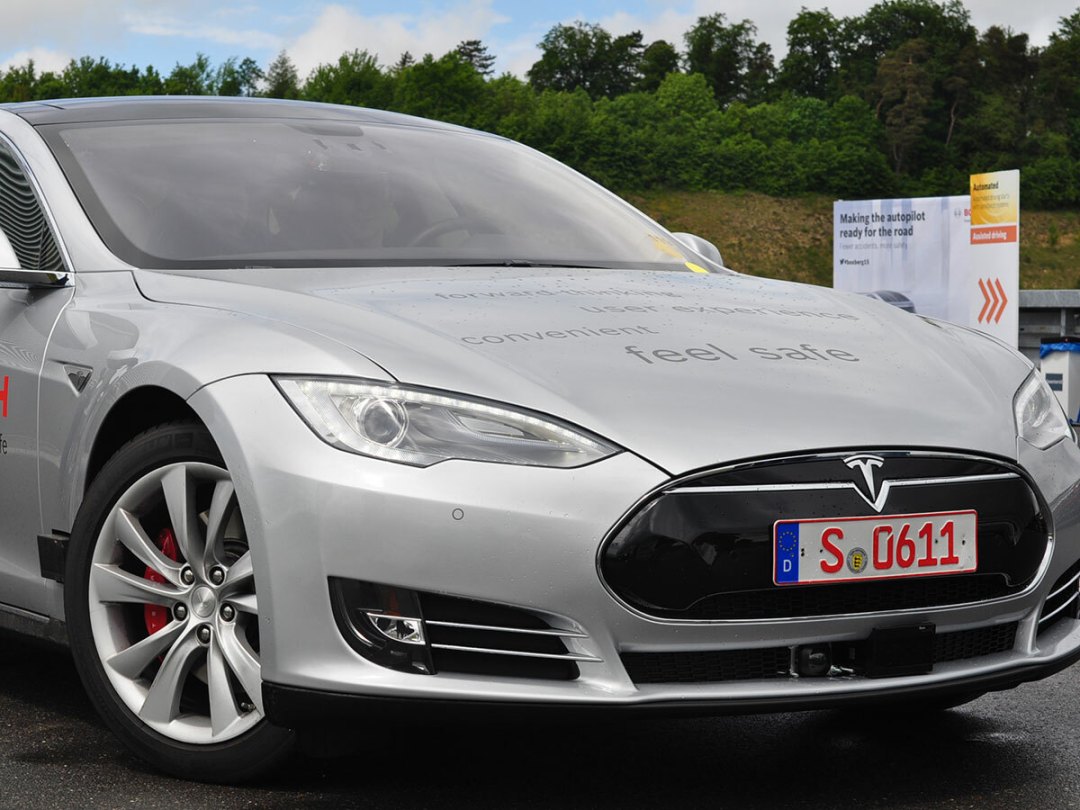
The Tesla Model S is a pretty sweet ride.
We’ve banged on about its ridiculous pace and impressive practicality. We’ve extolled the virtues of (and expressed our concerns about) the massive central touchscreen console. And we’ve heard hints of future improvements: the possibility of performance gains and new features delivered via a firmware update. You don’t get that in a Vauxhall Astra.
But there’s been one trick notably absent from Tesla’s armoury. Although it now has extensive driver aids – adaptive cruise control, automatic steering, self-parking – the Model S still expects you to actually drive it in most conditions. Granted, that’s fun, but even a brilliant electric sportscar might get dull on a daily commute. So Bosch went and made it automated all by itself.
(FYI: Tesla has said the Model S is ready to drive itself already via its new Autopilot mode. But it’s not what Bosch would term true autonomous driving: it’s equipped with radar sensors, but no LiDAR, so it can’t tell the difference between a Coke can and a car – most metal looks the same to a radar.)
Behold the robot Tesla!
Bosch’s engineers took a pair of Model Ss, tore them apart and reassembled them with the smart technology that would allow them to drive themselves. That technology consisted of 50 new components, including (brace yourselves) a front stereo video camera to watch the road markings and identify obstacles, six (non-Bosch) LiDAR laser scanners for 360º coverage around the car, two long-range (200m) and four mid-range (120m) radar sensors facing forwards and backwards, inertial sensors, a GNSS GPS navigation antenna, backup braking (both Bosch’s iBooster and ESP boxes) and ECU systems and a massive great PC in the back to hold hi-res maps and crunch the incoming data via bespoke algorithms.
In total, 1400 human-hours, 1300 metres of cable and an estimated €200,000 went into the car.
The result looks almost like a normal Model S – no pirhouetting Velodyne ‘Christmas tree’ on the roof here, just a few dark panels, a flying saucer GNSS antenna on the back and some industrial-looking buttons – and it’s so effective that it’s almost prosaic.
At the winding Boxberg test track, a Ford Fiesta drove around in front of us to show how smart the Tesla now is. Stopping quickly, driving at snail’s pace, accelerating into the distance: the Tesla reacted to the lot in a considered, sedate, measured manner. (Bosch tells us it can also swap lanes, overtake and merge with traffic on its own, but we didn’t get to check that out.)
All the while our ‘driver’ had his feet on the floor (literally, not figuratively) and his hands in his lap. I could see what the car was thinking via a screen lashed to the dashboard, which showed a real-time rendition of the road, a million datapoints dotting in and out as we were driven.
We went up to 90kph, but on the road the set-up allows equipped cars to shoot up to 130kph. According to Bosch, this Model S, its partner and a pair of BMW 3-series estates equipped with the same tech have had 10,000 incident-free kilometres on the German A81 and selected Palo Alto roads.
Where is this all going?
Taking a £60,000 car and doing £150,000 worth of work to it is all well and good, but Average Jeremy is unlikely to be getting one on a PCP. He’s also unlikely to want to have his boot space taken up with a mega-PC.
Bosch plans to rectify both issues by refining the prototype, improving the sensors, shrinking the PC to a compact ECU (engine control unit) and eventually coming up with an off-the-rack solution that’ll be available as an option in future cars. ‘Eventually’ means by around 2020, and the likely cost is as yet unknown (US$3000 is the target). But there are a few other hurdles to negotiate before our cars are driving us to work.
The first is data: Bosch has made its own high-res maps for the specific routes its cars can drive, but at the moment, most map data isn’t up to scratch – and it isn’t about to map the world’s roads on its own. The next generation of digital maps currently in development by the big names should partially solve the issue.
Ideally, says Aranda Belen, Product Manager Future Driver Assistance Systems at Bosch, more data would also come from outside the car. “Traffic jams, road signs, conditions on the surface of the roads – ice for example – with this sort of data we can calculate alternative trajectories. We need cities to become very smart in order to adopt highly automated models. We have to look for pedestrians, traffic lights, bicycles, so in addition to the onboard sensors, information from smart infrastructure would be perfect.”
Clearly, this isn’t something that’s going to happen overnight. Says Belen, "If we’re talking about driving and high automation on highways, we’re talking about the future. If we’re talking about smart cities, we’re looking much further ahead."
The second hurdle is legislation. Taking your hands off the wheel is a strict no-no in most countries. “If we talk about the Vienna Convention on Road Traffic, for example, in Europe [autonomous cars aren’t] allowed to drive without driver supervision. For prototypes it’s OK in some countries, but even if we had solved all of the technical topics, right now we wouldn’t be in a position to drive. This is something that has to change.”
Then there’s the thorny issue of liability. If a car is driving itself, but you’re in the driver’s seat, who’s responsible when it crashes? Belen is understandably noncommittal on the issue, focusing on the fact that Bosch is in the business of making driving safer by removing or lessening the impact of driver error, rather than focusing on increasing driver comfort.
“More than 90% or all accidents are caused by human error," she says. "We really think that by automating some functions, we will be able to reduce the number of accidents.” Nevertheless, it’s clear policies need to be nailed down ahead of the first driverless casualty.
Still, for now, there’s a robotic Model S. An electric supercar that drives itself around a test track and on highways without any help. We’re already living in the future.
RELATED › Tesla Model S Review
